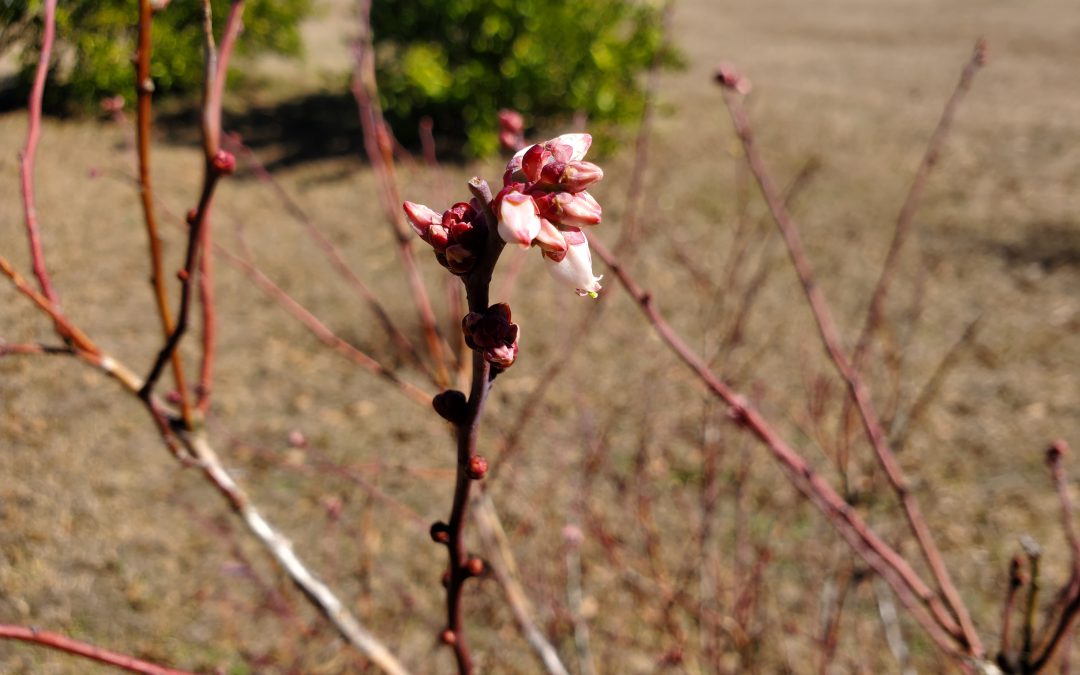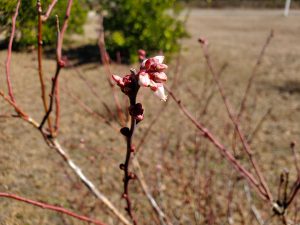
Chill Hours: What Are They and Why Do They Matter?
For being in a place known as the Sunshine State, the Panhandle has been mighty cold and dreary to start 2022! With all the recent bitterly cold weather that’s rolled through our neck of the woods over the last month or so, you may be asking yourself “Is this just a typical Panhandle winter or has it been colder than normal and what is the impact of freezing weather on my fruit trees?” The answer might surprise you!
The easiest way to measure cold and its impact on plants is through a unit of measurement known as a “chill hour”. In its simplest iteration, a chill hour is an hour of time during which the thermometer dips below 45 degrees F. These “chilling hours” are vital to agriculture and our native ecosystems because many plants, especially those that produce fruit like pears, blueberries, peaches, and even citrus, require a certain amount of chill to enter dormancy and develop flower buds for the following spring. All fruit trees have a minimum chilling requirement to initiate flowering depending on variety and too few chilling hours equals poor to no fruit the following year. Too little cold can be just as harmful as too much!

Blueberry beginning to flower after receiving adequate chill hours. Photo courtesy of Daniel Leonard.
Now that we know about chilling hours, the question remains, is this a normal winter or has it been colder than normal? The answer is neither. Based on historical average data from the UF/IFAS weather station in Marianna (a central location in the Panhandle and a good proxy for your local temperatures), as cold as we’ve been in January and early February, we’re still lagging the historical average with respect to chilling hours, and therefore to total cold temperatures. As of February 6th, 512 chill hours had been recorded this winter. This seems like a lot until you check and see that we had 554 chill hours on the same day last year and the historic average is more than 750! Though January and February have indeed been cold this year, the chill hour graph indicates that over the last few years it’s taken longer into the calendar to achieve our first chill hour and that cold weather isn’t pushing as far into spring as it historically has.
There are many potential explanations for the warming trend in the Panhandle but regardless of your preferred theory, backyard fruit growers need to adapt to deal with the change in chill. The primary way to combat fewer chill hours is to evaluate your current fruiting plants and think about replacing high-chill varieties that no longer produce well with lower-chill varieties. If you know the variety you have, look up the number of chill hours that variety requires. If it’s an older variety that requires near the historical chill average or more, you may consider replacing it with a newer variety that requires fewer chilling hours. For example, the popular old blueberry variety ‘TifBlue’ requires 600-700 chilling hours. For most of the previous decade, we have either just barely or not reached that many chill hours, leading to a low fruit set. Replacing ‘TifBlue’ with a newer, lower chill variety like ‘Powderblue’ will probably increase your blueberry production. If you don’t know what variety of fruit tree or shrub you have, just observe the flowering period over the next spring or two. If it doesn’t flower at all or flowers sporadically and you don’t make a good fruit yield, a high chill requirement very likely could be to blame and replacing it could enhance production!
Though we’ve had an intensely cold start to 2022, if current trends continue, this wintry weather will most likely play out before we reach historic averages. That doesn’t mean you can’t grow plenty of backyard fruit, it just requires adapting to the times with lower chill varieties! To keep up with chill hour accumulation, visit http://agroclimate.org/tools/chill-hours-calculator and if you have any questions about fruiting plant variety selection, chilling hours and their effect on plants, or any other horticultural topic, contact your local UF/IFAS County Extension office! Stay warm and happy gardening!

